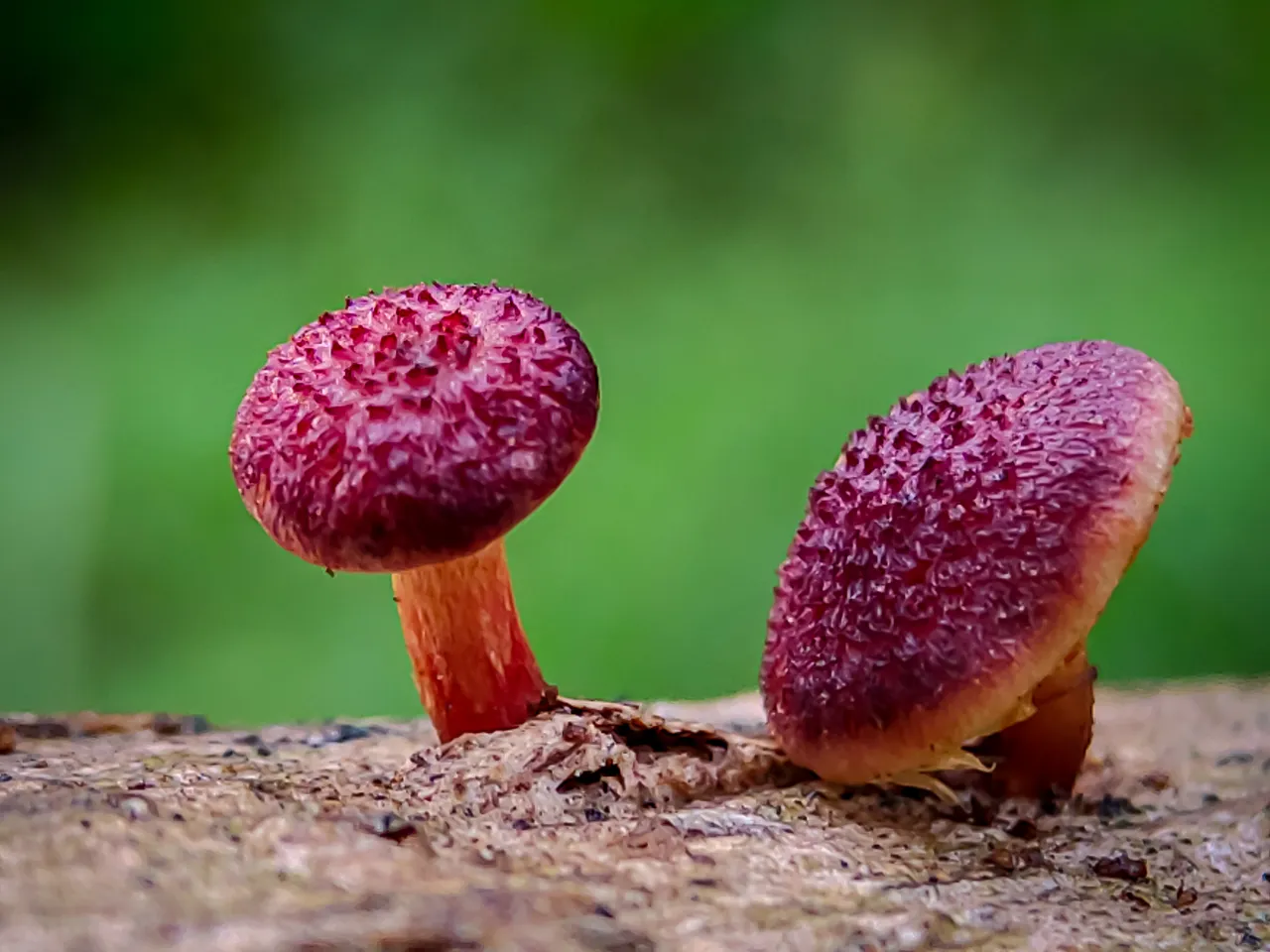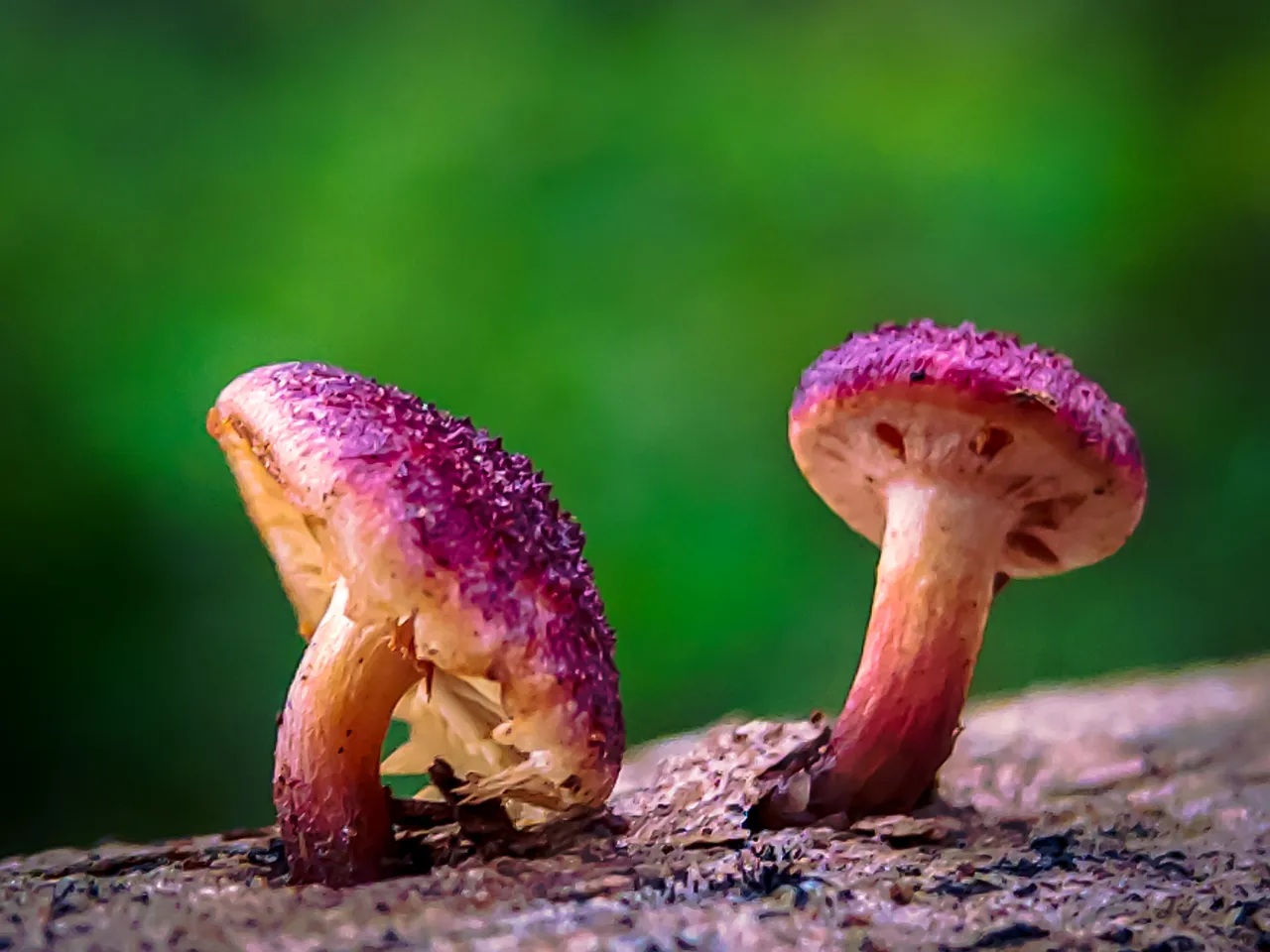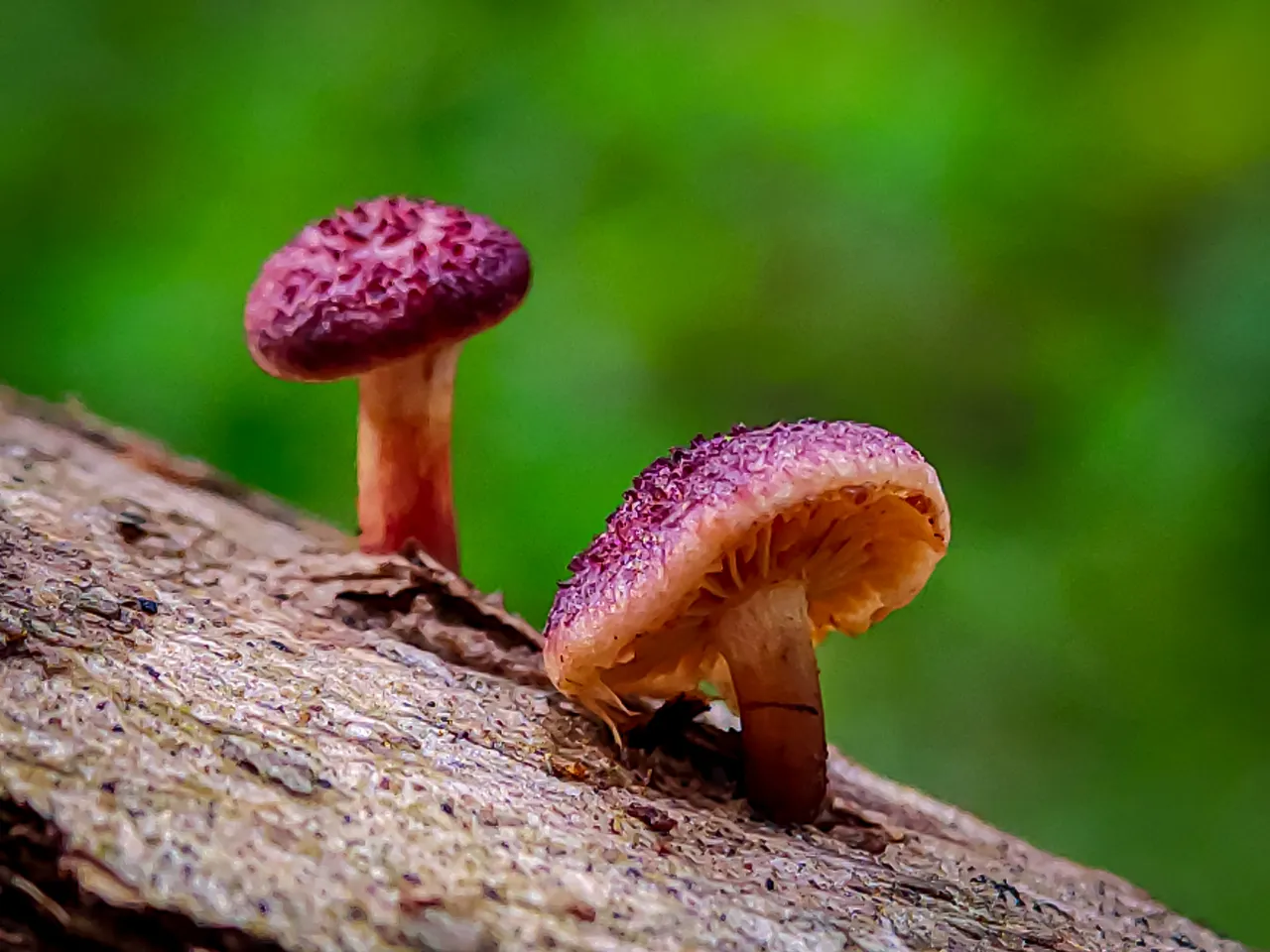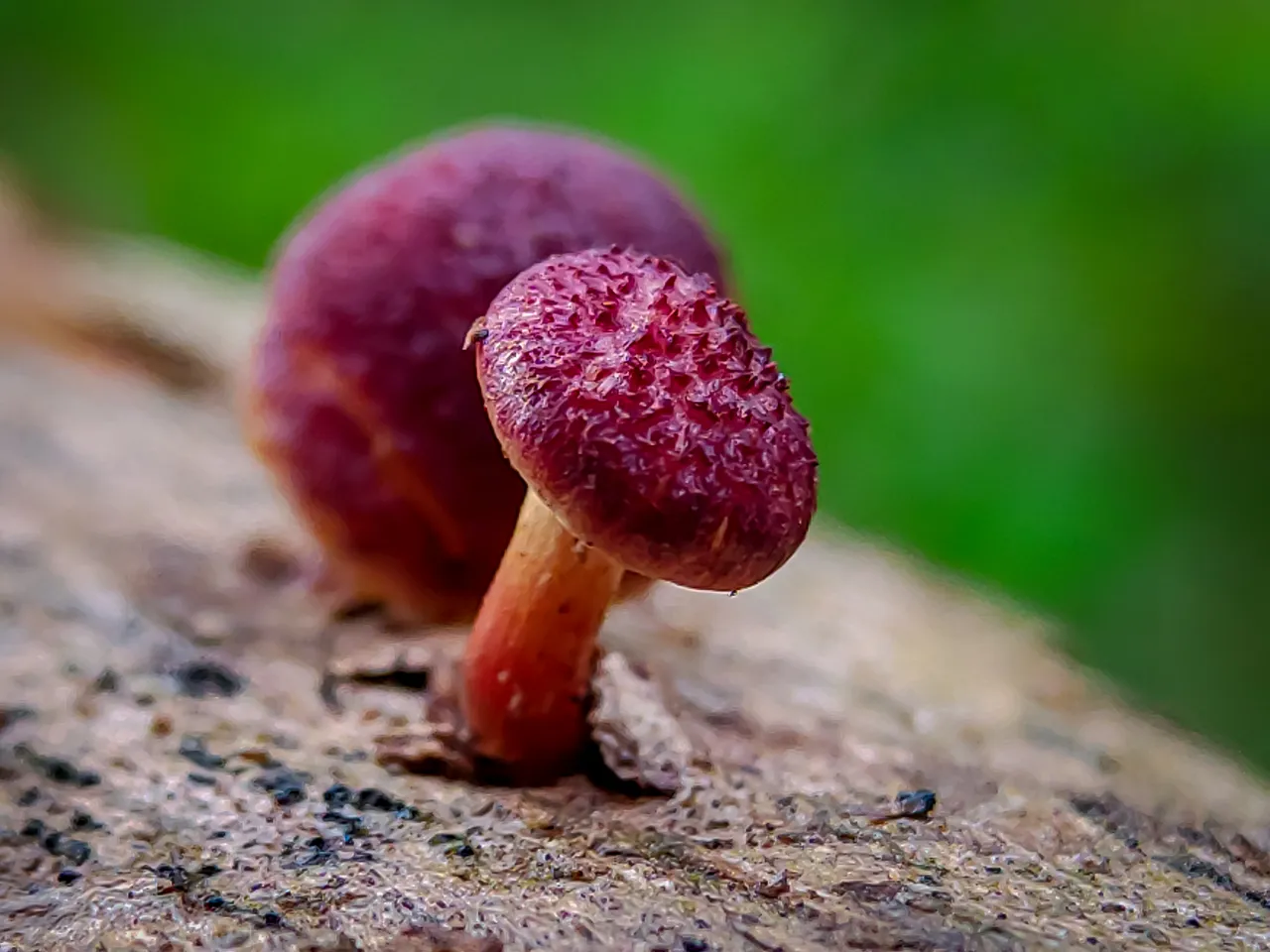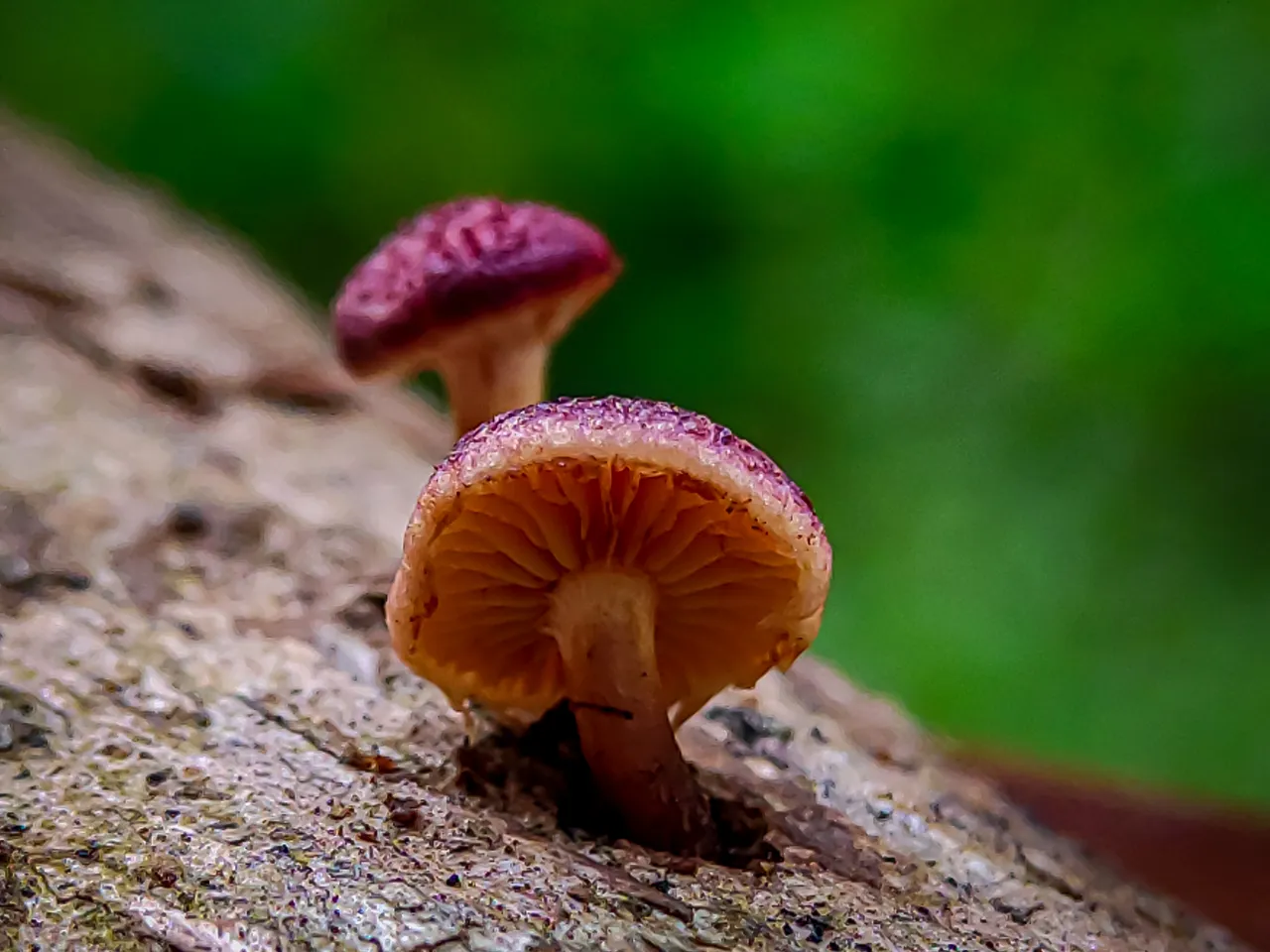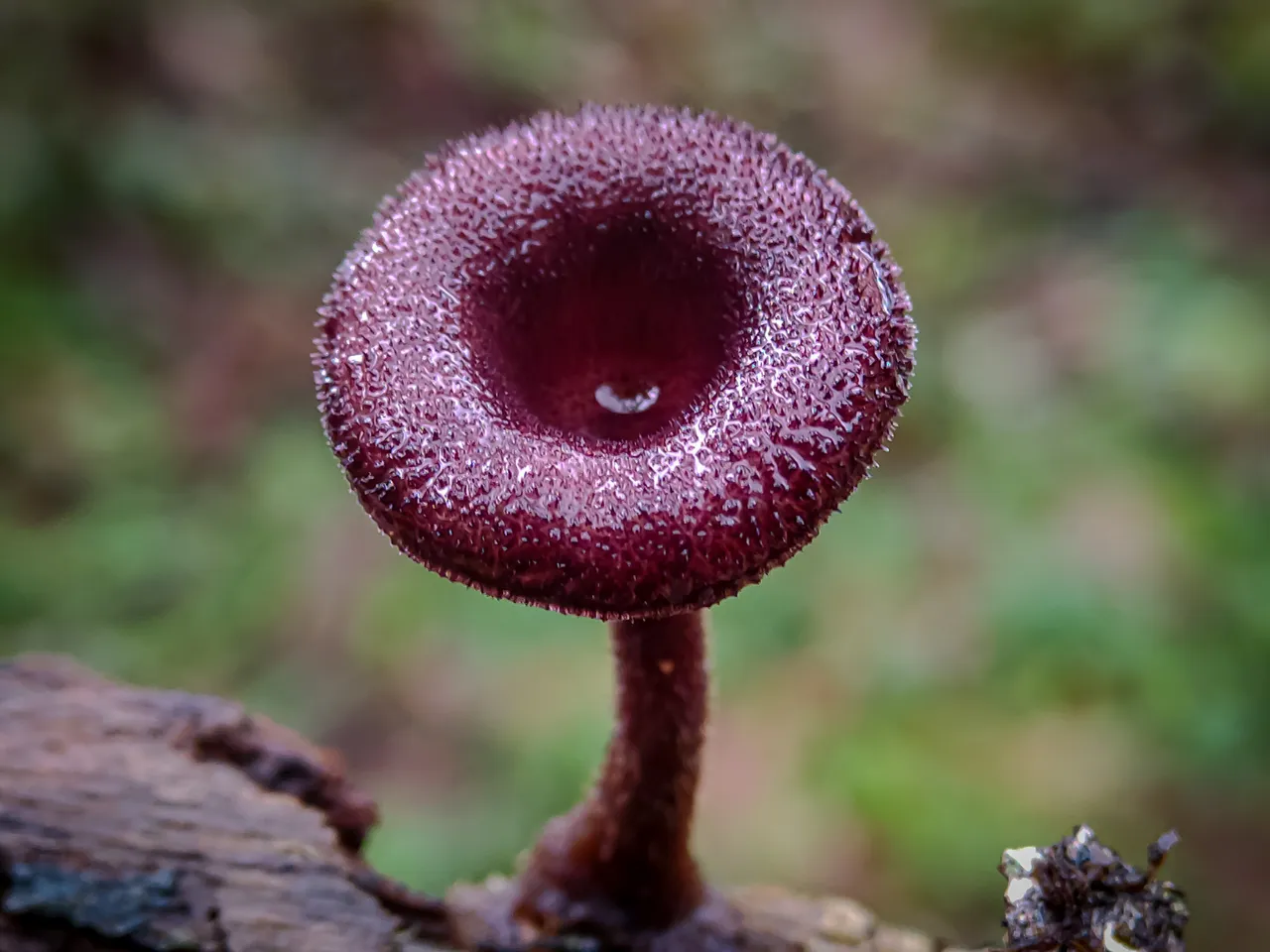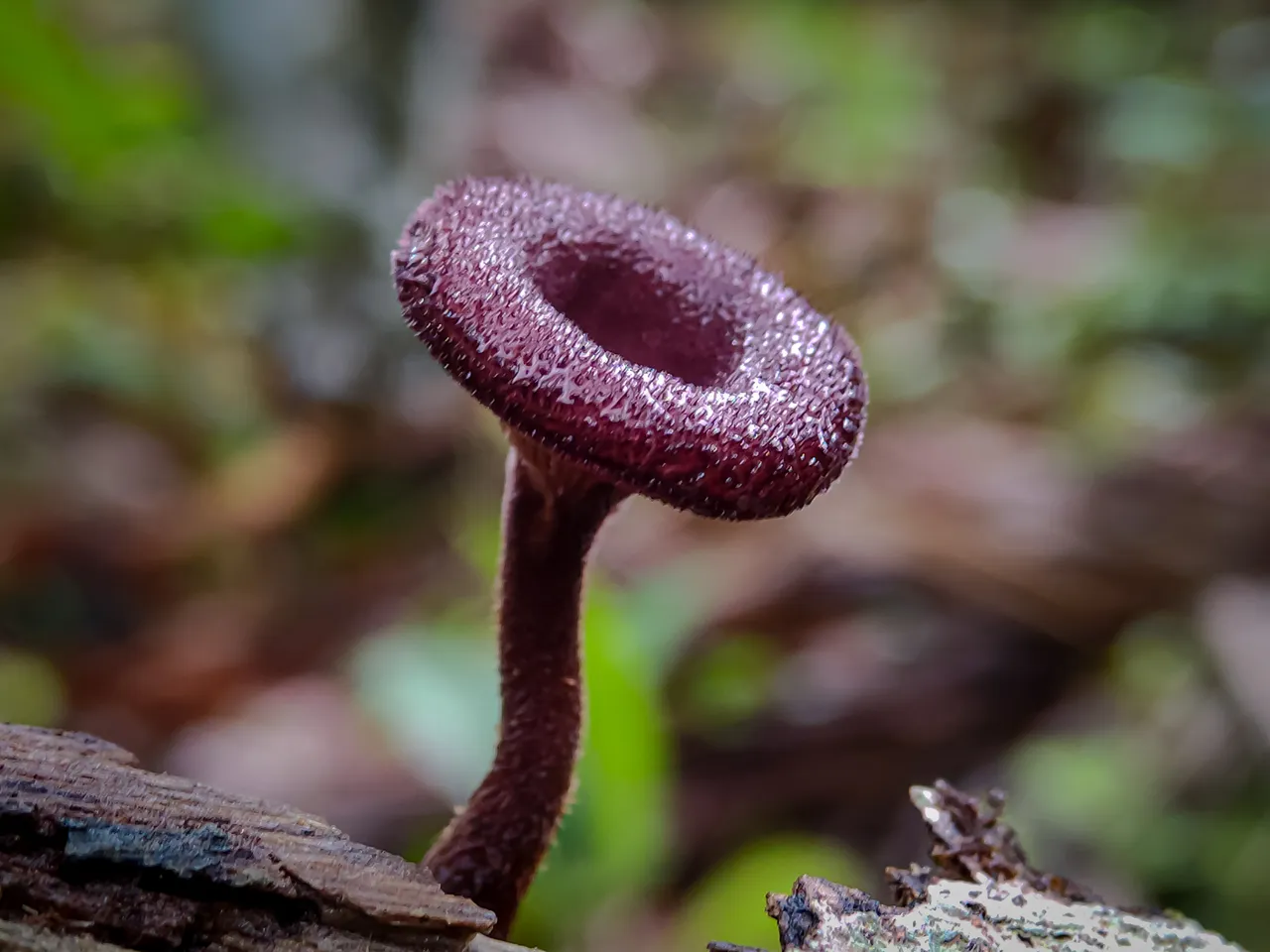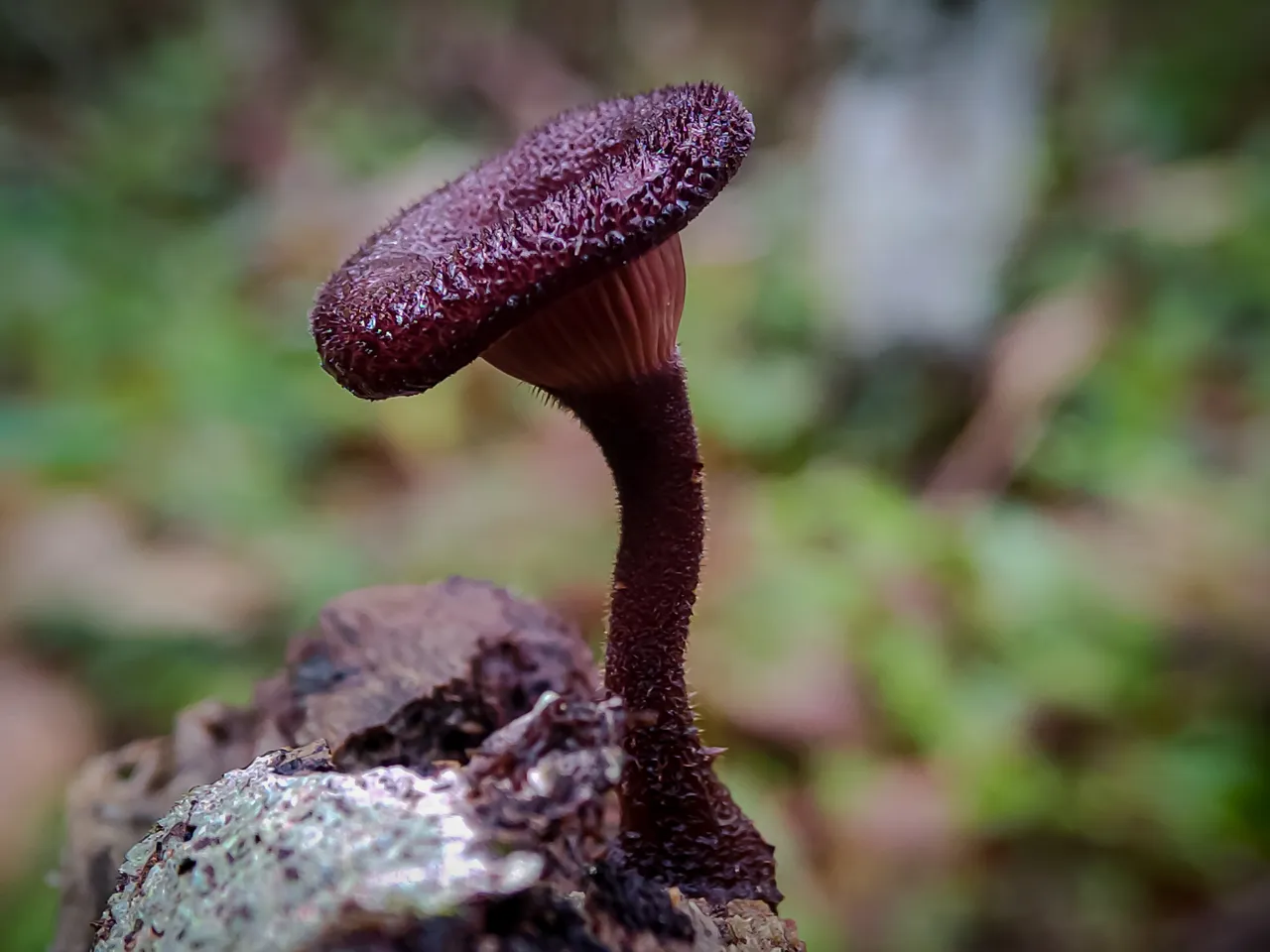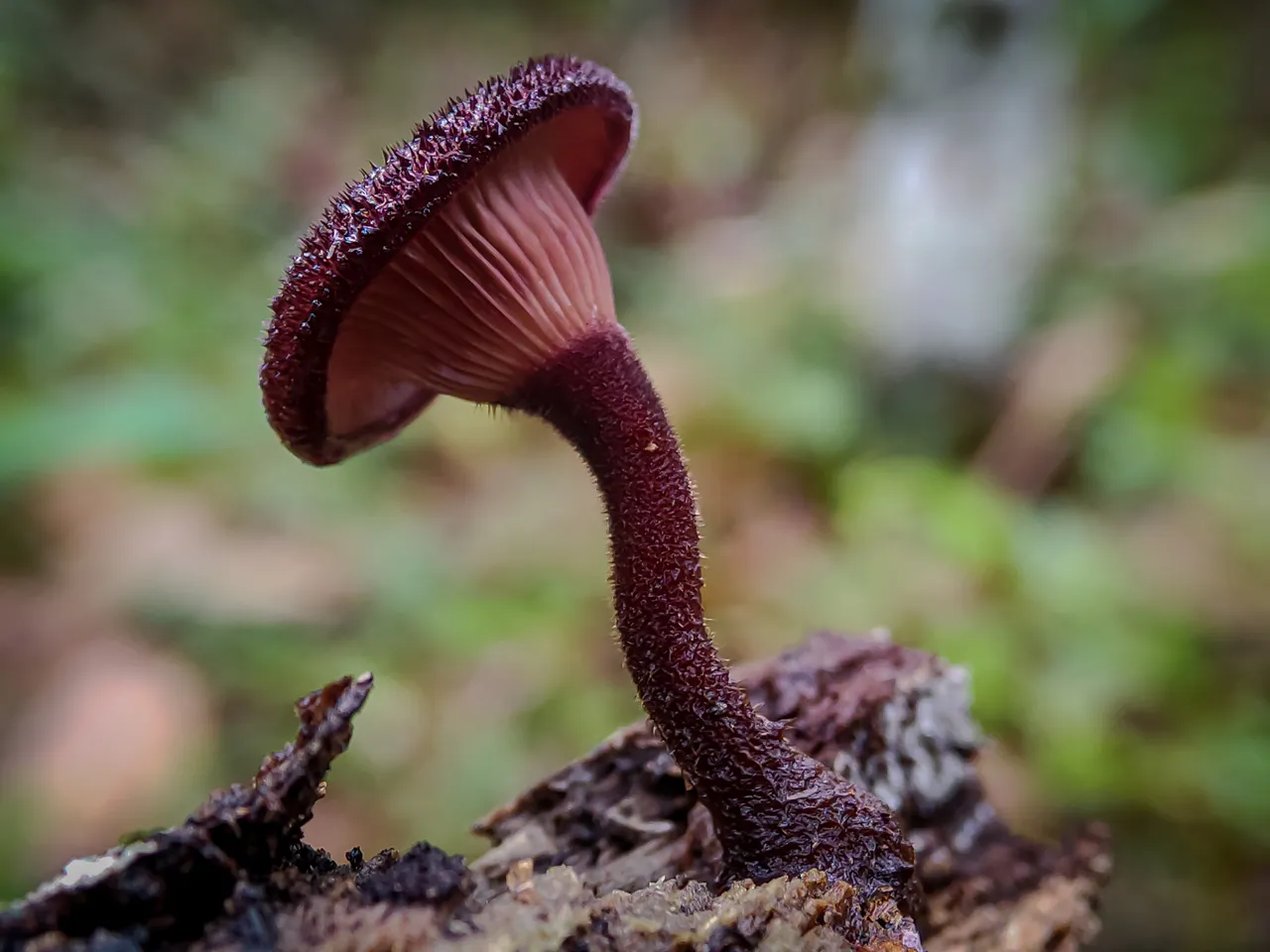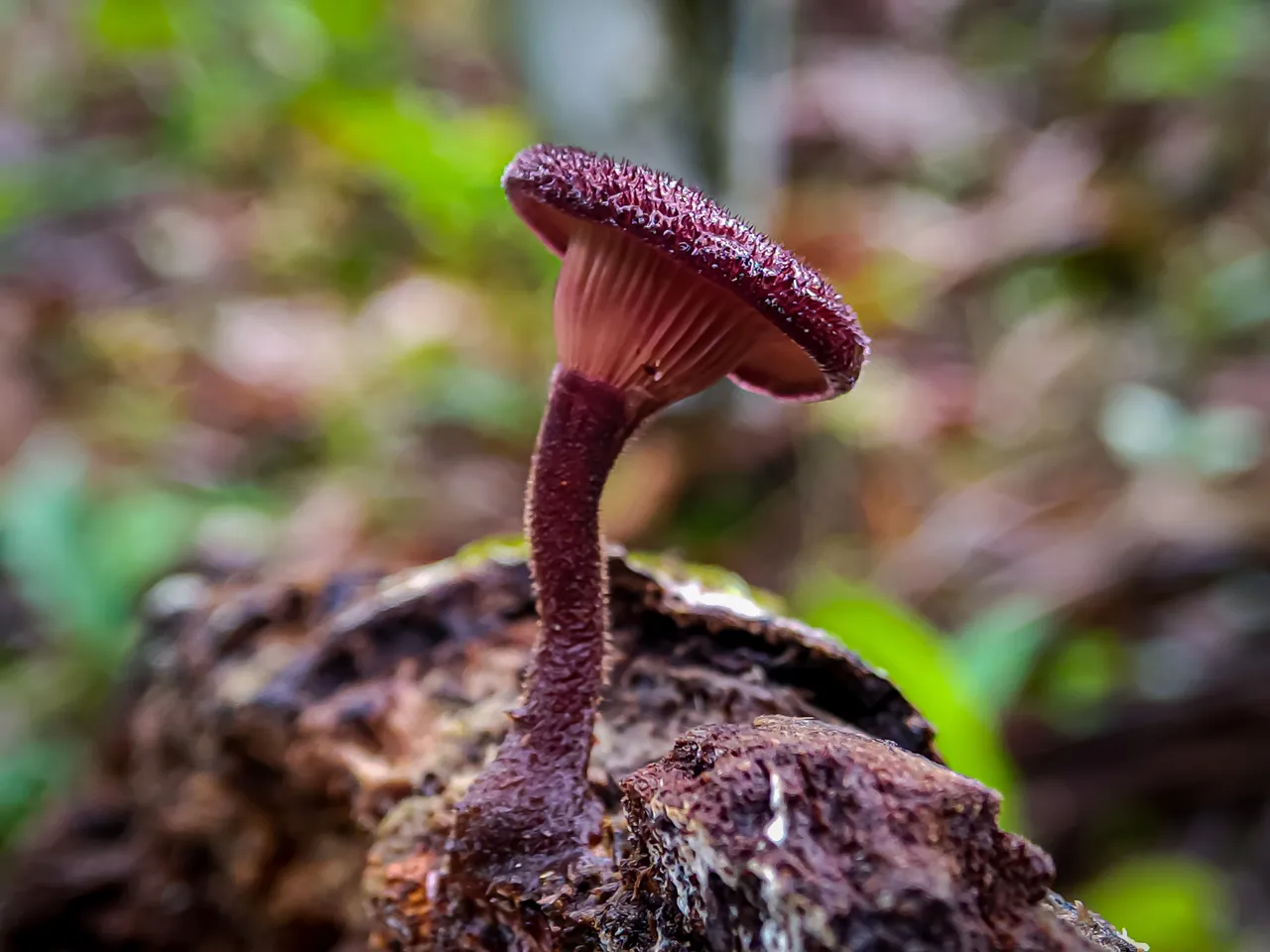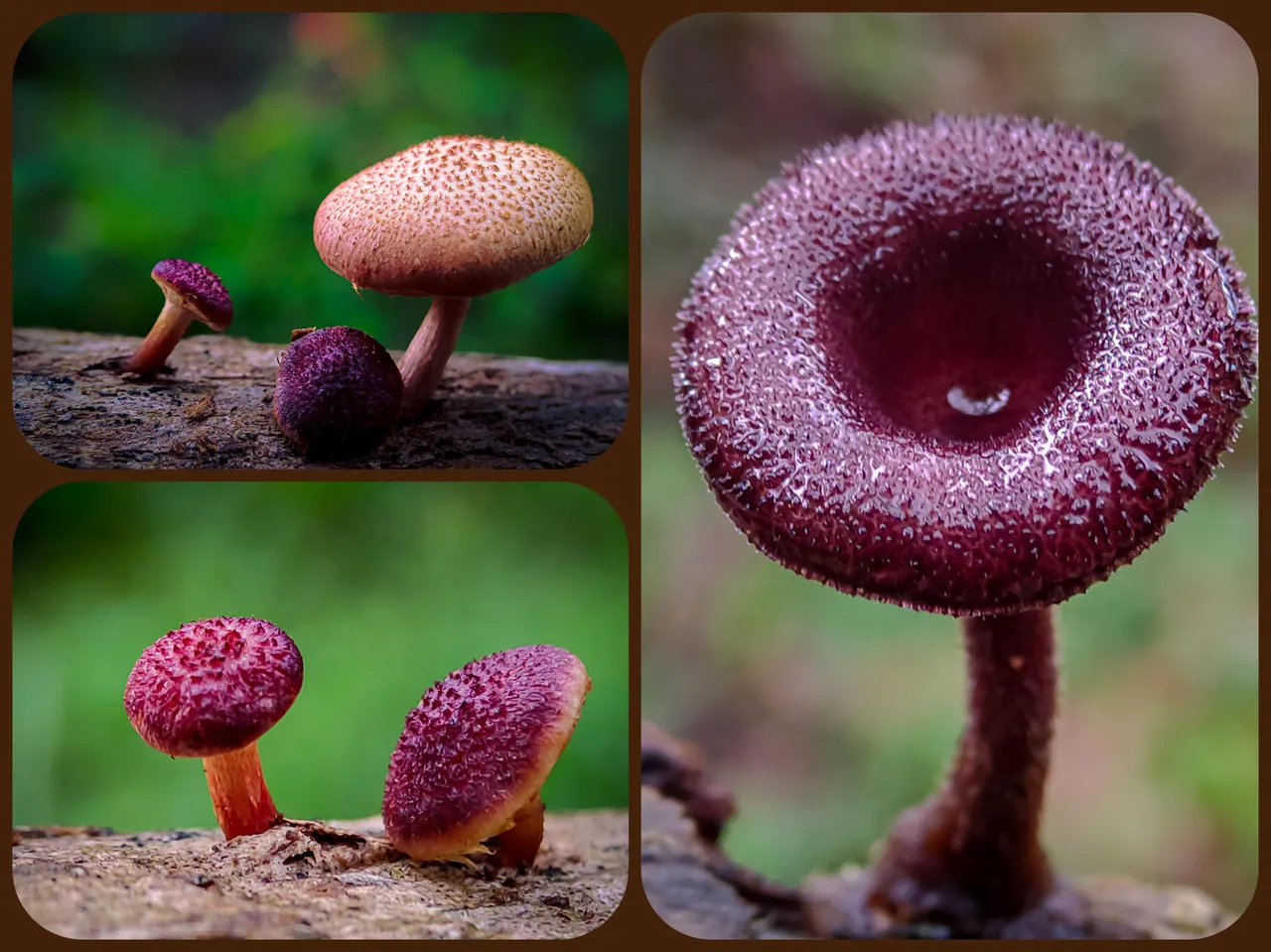
Hello buddy!
Time to participate for the #fungifriday community hosted by @ewkaw
It doesn't feel like seven days have passed, now it's time to show some of the mushrooms I found.
This time I have three types of mushrooms, their shapes and colors are almost the same. But it's clear they're different mushrooms and different sizes.
The first mushroom is Gymnopilus dilepis
The purple color and its tiny shape make it even more beautiful and adorable, this toadstool grows in groups in small numbers.
Gymnopilus dilepis is a species of fungus in the family Cortinariaceae. This species is found in India [2] and North America. It was given its current name by mycologist Rolf Singer in 1951. Source
The second is the mushroom Armillaria borealis
If we look for a moment this skin is almost the same as the first one but it has a yellowish brown color and its size is also much larger than the first.
Armillaria borealis is a species of fungus in the family Physalacriaceae. Phylogenetic analysis of ribosomal DNA has shown that in the genus Armillaria, this species is closely related to A. solidipes and A. gemina. Source
And third is Laccaria amethystina
The shape is a bit different from Laccaria amethystina but I think this mushroom also belongs to the same family because Laccaria amethystina has many types but their color remains the same.
This toadstool has petals with round circles that are almost similar to donuts, he is very charming to me.
Laccaria amethystina, commonly known as "amethyst cheater," is a small, brightly colored mushroom that grows in deciduous and coniferous forests. The fungus itself is edible, but it can absorb arsenic from the soil. As its bright amethyst color fades with age and weathering, it becomes difficult to identify, hence the common name "swindler". This common name is shared with its close relative Laccaria laccata which is also faded and weathered. It is found mainly in the northern temperate zone, although it has been reported to occur in tropical Central and South America as well. Recently, several other species in the genus have been given the common name "swindler". Source
Looking for mushrooms is a fun thing, finding a type of mushroom that we have never seen before is very fun and definitely very satisfying. So never get bored and stop to find these beautiful mushroom mushrooms in nature.
Here are some pictures of these mushrooms:
 Armillaria borealis and Gymnopilus dilepis
Armillaria borealis and Gymnopilus dilepis
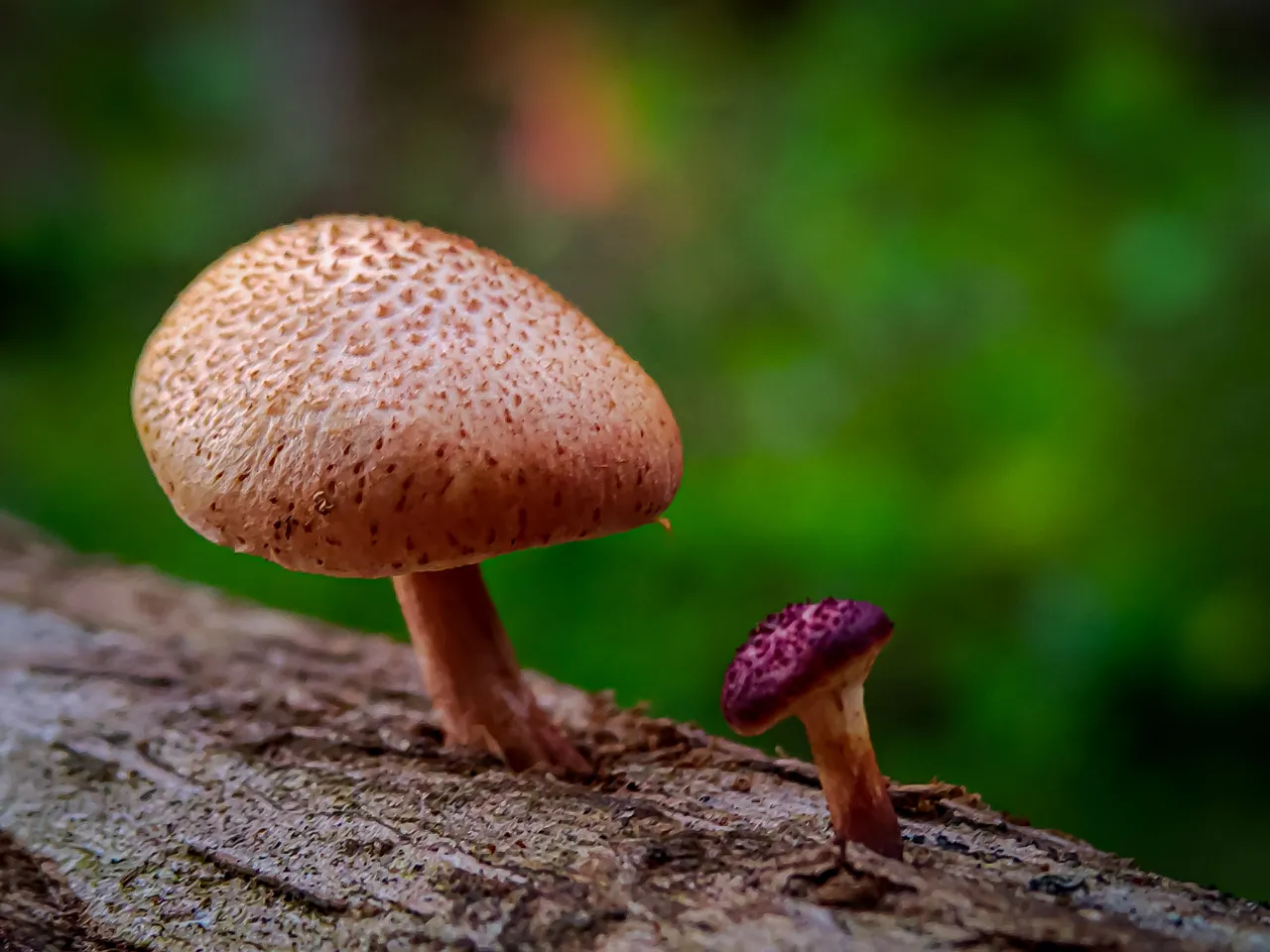 Armillaria borealis and Gymnopilus dilepis
Armillaria borealis and Gymnopilus dilepis
 Armillaria borealis and Gymnopilus dilepis
Armillaria borealis and Gymnopilus dilepis

| Camera | Realme 8 Pro + macro lens |
|---|---|
| Category | Photography fungi |
| Light processing | Lightroom mobile |
| Location | Aceh, Indonesia |
| Photography | @khairamuliani |
